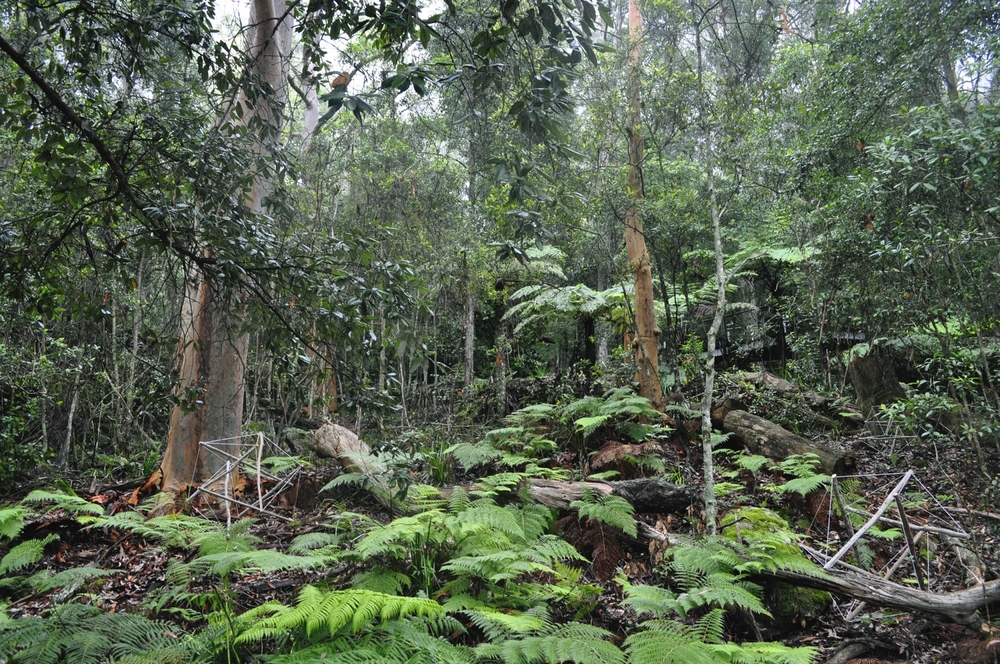Bolitho, Jonathan
Read here about an artist who builds tensegrity structures.
Overview
Jonathan Bolitho is an artist who works in outdoor spaces. He often collaborates with Harry Hock. In 2016 they mounted "Beneath Our Feet", an outdoor installation that featured tensegrity as a primary structural theme.
Bio
Jonathan Bolitho is studying Interactive Media Art and Design at University of New South Wales. He has mounted many exhibitions such as Velo/City (2015) an interactive permanent mural as part of Veloscape, City of Sydney Initiative. UNSW Art and Design Campus Paddingto, and Spectral Shrine (2015) a group exhibition curated by Amanda Saker as part of BEAMS festival. ARCO space Chippendale.
Harry Hock earned his BA of Sound and Music Design at the University of Technology, Sydney. Some recent exhibitions include ‘Attune’ VIVID Sydney 2016, large scale interactive installation in Circular Quay, and sound designer of ‘Robotanic’ VIVID Sydney 2015, large scale interactive installation in Martin Place.
Beneath Our Feet
Beneath our Feet was an outdoor exhibition in June 2016 at [Scenic World, Australia]. Scenic World is located in Katoomba, two hours from Sydney, Australia.
The tensegrity structures are simple 6 strut tensegrities bound with elastic tendons. The struts are fallen branches found in the forest.
Photo Gallery
All photos by Jonathan Bolitho and Harry Hock.
Description
Description by the artist:
Tensegrity is a structural principle based on the use of isolated components inside a net of continuous tension. This principle is evident in the natural world and present in many biological and organic lifeforms. The structure is able to naturally disperse the stress placed upon it across each individual element: like an ecosystem, the structure as a whole relies on its constituent parts.
In ‘Beneath Our Feet’, this synergistic method of construction is utilised to parallel the interconnectedness of a rainforest. Elastic strands connect the found sticks in a unified symmetrical shape, while the found sticks are repurposed and given new life, mimicking both the physical structure and function of microorganisms beneath the forest floor. Over time the sculpture itself, composed of organic materials, will decompose and assimilate into the natural landscape.
Report on the Installation
The following was written by Giaco Furino and published on "The Creators Project", vice.com, Jun 27 2016. Link: [vice.com]
‘Beneath Our Feet’ structures in Australia’s Scenic World, New South Wales. All photographs by Jonathon Bolitho and Harry Hock. All photos courtesy of Jonathon Bolitho.
"Tensegrity" is the structural principle of binding isolated components inside a net of continuous tension—sort of like a forcefield, but for real physics. In Beneath Our Feet, Australian artists Jonathon Bolitho and Harry Hock use found sticks and elastic to visualize this notion of tensegrity. Like the fragile ecosystems they float in, the objects in Beneath Our Feet are under constant threat of deterioration... or full collapse. Should one of the pieces of a stick, or a band of elastic fail, the entire structure will succumb.
Bolitho and Hock created the work in response to a call for artwork at Scenic World, a tourist attraction in a Jurassic rainforest in New South Wales, Australia. Bolitho describes it to The Creators Project as “an elevated boardwalk that snakes through old rainforest. Harry and I both went there a lot as kids, doing a lot of bush walks around Sydney and exploring nature. It's hard not to be romantic when talking about nature, but we have both studied horticulture and have this affinity for plants and the natural world, which of course has formed a huge part of our artistic practice.”
“We wanted something that would showcase the existing beauty of the surrounding rainforest," Bolitho continues, "rather than simply making a sculpture that would be exhibited in the rainforest. Being conscious of place and context led us to create Beneath Our Feet, a work that is connected to its surroundings both physically and conceptually in the way it models a rainforest ecosystem.”
Bolitho says the biggest challenge while putting together the project was a simple one: finding the sticks. “They had to be super straight and all the same lengths," he explains. "Also the process of constructing the forms was challenging because of the fact we were using elastic: the structure itself is held together without glue or anything, relying on its own tensile strength. This means that when you're making the form it kind of fights against itself, which for us basically meant a giant rubber band to the face at any given moment.”
“We were fascinated by this concept,” Bolitho says, “because it's present in many biological forms and also conceptually it mimics the function of a rainforest ecosystem. Without one element, the system is susceptible to collapse.” Bolitho adds, he feels extremely lucky to have worked in such a pristine natural environment: “It's such a rare opportunity.”
Links and References
Official Websites: Bolitho, http://jonathonbolitho.com. Harry Hock, http://www.harryhock.com/
Giaco Furino, author of the Vice report above, links: Vice.com, twitter





